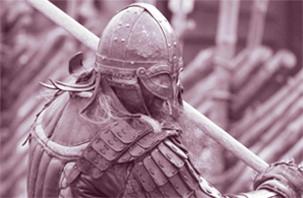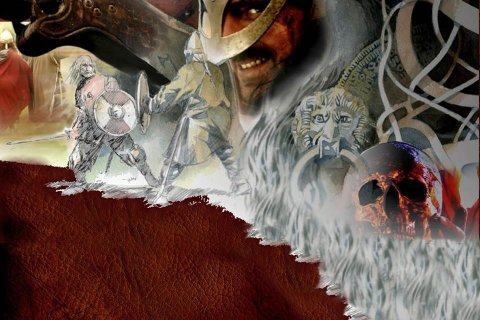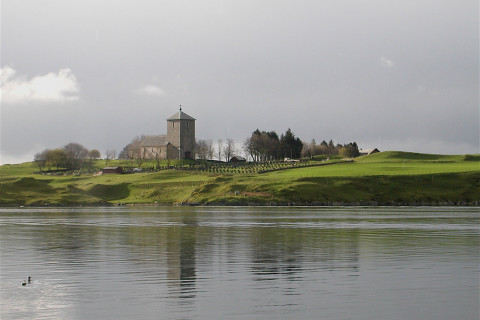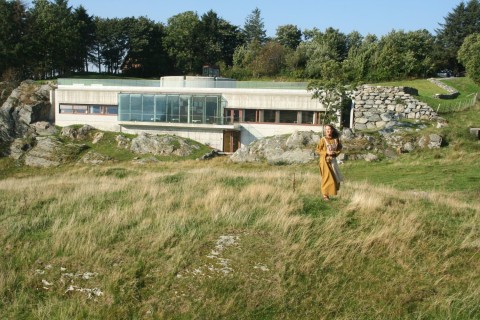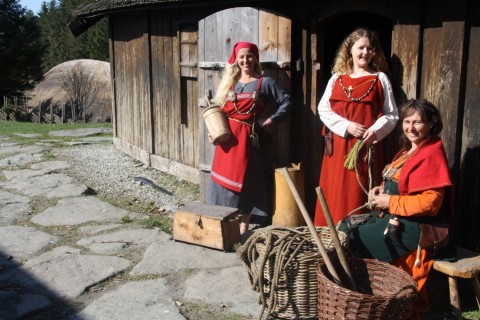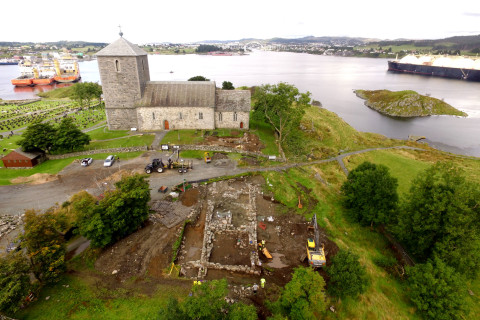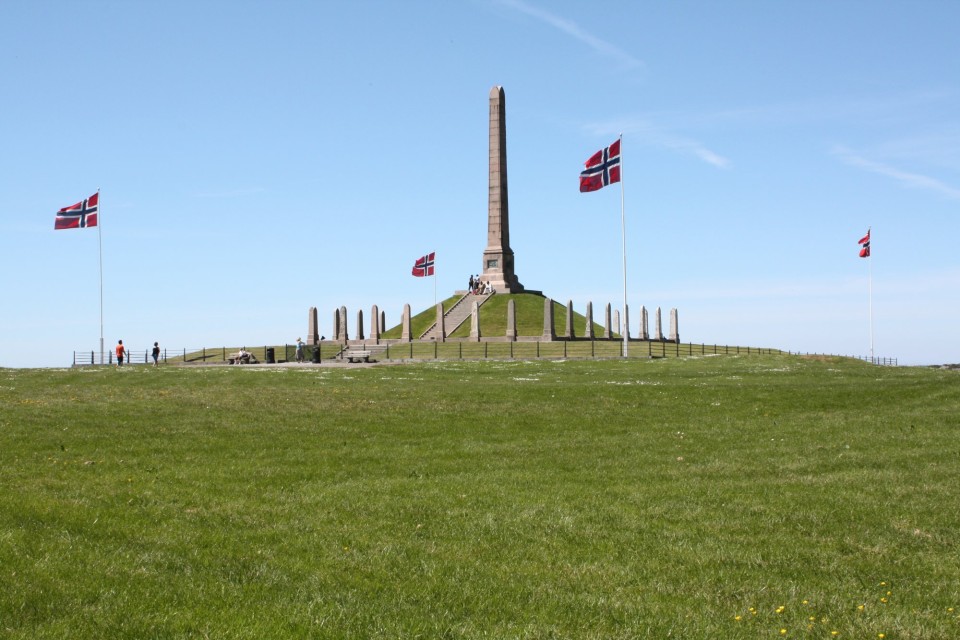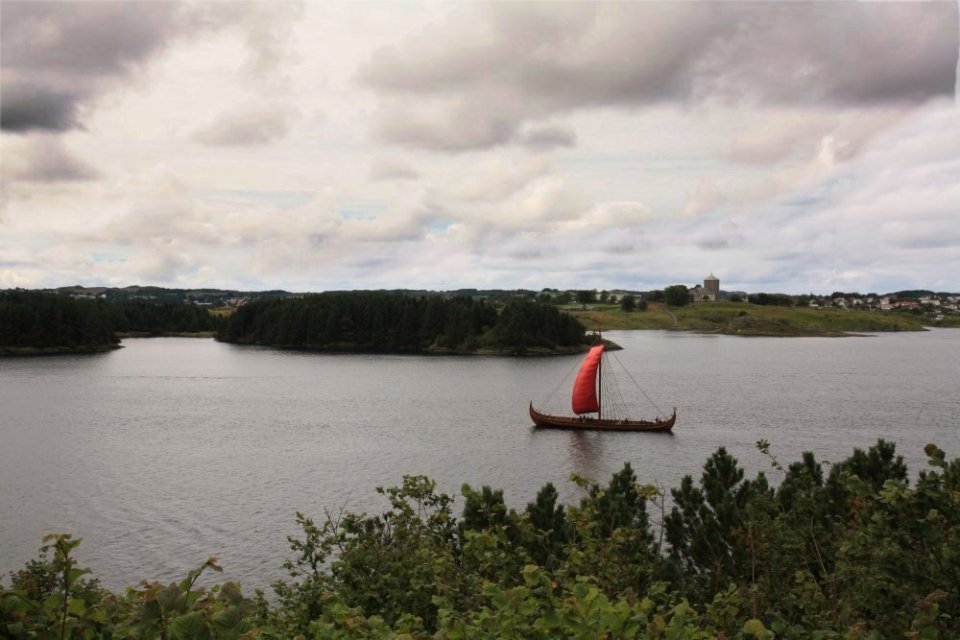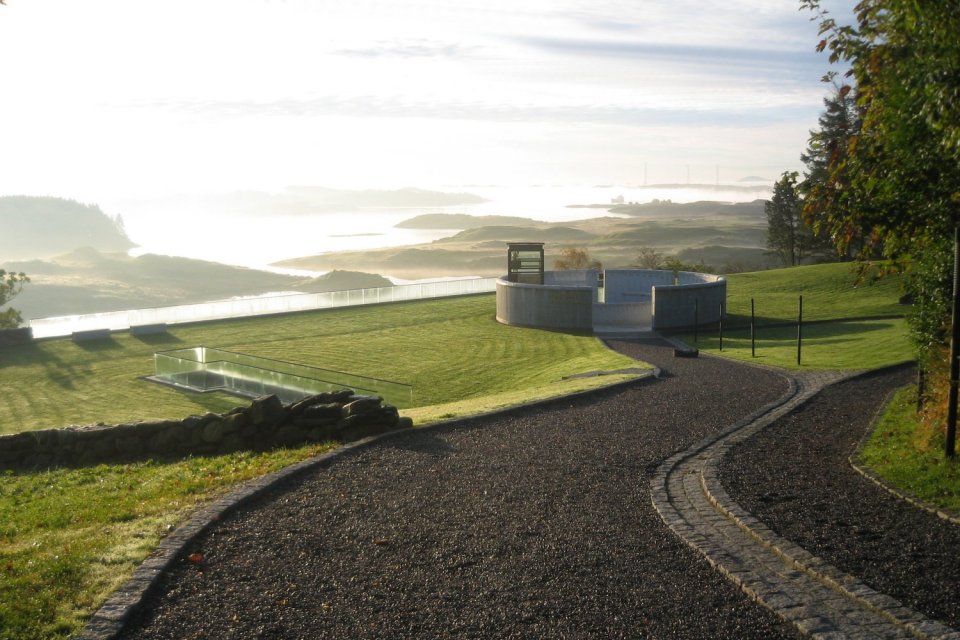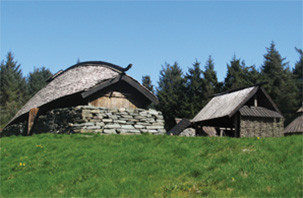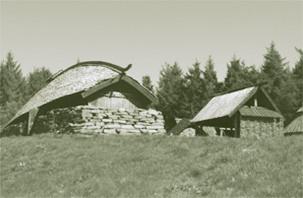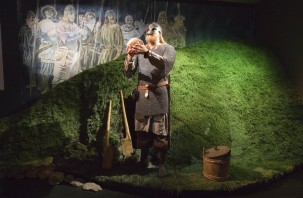Harald Fairhair
Text: Marit Synnøve Vea
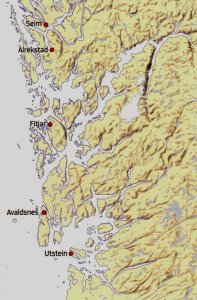
THE ROYAL MANORS OF HARALD FAIRHAIR. All Harald’s royal manors were located in the region of Rogaland and Hordaland.
(Haraldr hárfagri) (Harald Fairhair/Finehair), (Ca. 850 – 931/32) King of Norway from ca. 872 -931
- Harald Fairhair has traditionally been given the credit for uniting Norway into one kingdom after winning the Battle of Hafrsfjord in ca. 870.
- In reality he gathered only Western Norway. All Harald’s royal manors were located in the region of Rogaland and Hordaland. Elsewhere in Norway, earls governed on Harald’s behalf.
- Avaldsnes is regarded as Harald’s most important royal seat. Harald could control his west Norwegian realm best from Avaldsnes. It was here he settled and felt safe in his advancing years.
- Harald died at Avaldsnes, and it was in this area he was buried at “.. Haug by the strait of Karmsund“.
- Harald Fairhair and his descendants held court at Avaldsnes for almost 500 years.
Harald Fairhair: Founder of the kingdom of Norway and founder of a royal dynasty
- Harald Fairhair is the longest reigning monarch in Norway
- Harald was both the founder of a kingdom and the founder of a royal dynasty – the king of all kings. Those who reigned after him had to prove legitimate family ties with Harald before assuming their right to the throne.
- The sagas describe Harald Fairhair as an unusually handsome man. He was tall and strong, generous, wise and sociable.
- Harald established a cultural centre around his court. The saga tells that: Of all his warriors Harald Fairhair treasured his skalds the most: They were seated opposite him in the high seat.
- Harald was also a sea-king and a Viking. He was in his element on board a ship and sailed far and wide on Viking raids.
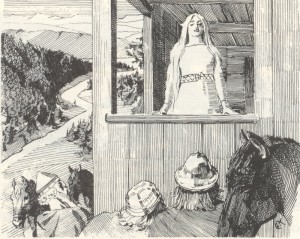
The Saga of Harald Fairhair tells that Gyda refused to marry Harald “before he was king over all of Norway”. .
(Harald Hårfagres Saga, Ill. E. Werenskiold)
Gyda goads Harald to unify the kingdom
- The saga claims that Norway was united because Gyda, a princess from Hordaland, refused to marry Harald “before he was king over all of Norway”. Harald was therefore induced to take a vow not to cut nor comb his hair until he was sole king of Norway. In this period he was nicknamed Harald Tangle-hair. (ON Lufa).
- In reality, it was probably the old Germanic ruler myths that made Harald to go uncut. According to these myths hair and beard was filled with power and strength.
- 10 years later, when Norway was united “into one kingdom” Harald trimmed his hair and gained the nickname Fairhair or Finehair.
The battle of Hafrsfjord
The Battle of Hafrsfjord took place at some time between the year 868 and 900. This battle is traditionally regarded as the major turning-point in Harald’s quest to join the whole of Norway into one kingdom. It is probably more true to say that the battle represented his enemies’ last death throes.
The ancient Lay of Harald tells that Harald’s foes were “men who came from the East. The strongest among them was Haklang, who may have held court at Utstein.
Harald and his followers bore red shields and red cloaks. His enemies bore white shields.
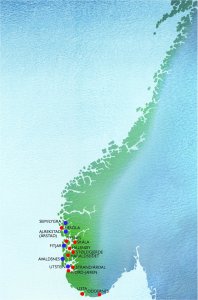
- • Harald Fairhair’s royal manors in the first half of the 900s
• Harald Fairhair’s possible royal support points on the first half of the 900s
¤ Green color marks the regions that, according to old written sources, were most central in Harald Fairhair’s kingdom (after Krag 1995 : 87)
- Map after Arnfrid Opedal (Ill Steinar Iversen)
Harald Fairhair – a King of Western Norway
The chronicler Snorri Sturluson places Harald Fairhair among the Ynglinge bloodline. However, the lay Ynglingatal, which is Snorri’s “source” and the Ynglinge bloodline’s “family tree”, never mentions Harald Fairhair even once. Snorri writes that Harald came from Vestfold in Eastern Norway, and that his father was Halfdan the Black and his mother was Ragnhild Sigurdsdotter from Ringerike
Other sources, which are older than Snorri, tell a different story, here Harald’s mother was Ragnhild, daughter of King Harald Goldbeard in Sogn.
Newer research indicates that Snorri Sturluson was doing political agitation on behalf of the Norwegian king of the 13th century when he placed Harald among the Ynglinge bloodline. Snorri did this to establish a Norwgian hereditary claim to Viken, the region around Oslo, which both the Danish and Swedish kings claimed as theirs area.
Did Harald come to Avaldsnes as heir or conqueror?
It is said that Harald Fairhair established Avaldsnes as «Norway’s Oldest Royal Seat», but Avaldsnes had been a royal seat ever since the third century. When Harald settled down at Avaldsnes, he dispelled the sitting king Hjør and his queen Lufvina from the thrown.
Hjør descended from the Augvald dynasty, and could prove a nobler family lineage than Harald Fairhair, who had a rather unclear ancestry.
But could it be that also Harald Fairhair had a hereditary claim in this area? Scholars have asked if it was possible for Harald to establish such a seat of power in Southwest Norway without already having long family roots here or owning land in the area?
Connections between the Kings at Avaldsnes and the Ynglinge Bloodline from Vestfold.
Dendrochronological studies carried out in 2009 show that the Osebergship, found in Vestfold, is built of oaks from the same area of South West Norway as the Grønhaug and Storhaug ships. Considering that these two vessels are buried close by the royal estate at Avaldsnes, it seems very likely that the Avaldsnes kings built both these and the Oseberg ship.
These dendrochronological studies provide the first archaeological connection between Avaldsnes and the Ynglinge bloodline in Vestfold. Perhaps this could also provide a new perspective on the unification process of Norway?
These surveys have presented the possibility that one of the princesses from Avaldsnes was married off to a member of the Ynglinge bloodline from Vestfold. She would have travelled south in the Oseberg ship, which would also have served as her dowry. It is likely that, upon her demise, the ship would have travelled with her on her final voyage to the afterworld.
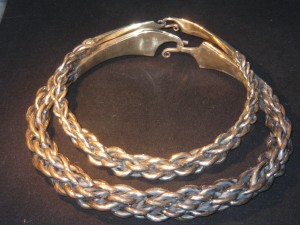
A neck ring and an arm ring of silver from the Viking Age. Found by the seaside at Eike, Avaldsnes. Possibly rings given to show alianse with people who performed important duties for the king. (Photo Marit Synnøve Vea)
Did Harald Fairhair have ancestors from both Avaldsnes and the Ynglinge bloodline? Can we assume there was an alliance between Vestfold and the kings at Avaldsnes in the early 9th century? And if so, against whom was the allegiance intended? Could it have been the Danish kings, who were in control of the Viken area at this time?
See:
Arkeologi i Nord: KARMØY OG OSEBERG
NRK: OSEBERGSKIPET KOMMER FRA KARMØY
Aftenposten: OSEBERGSKIPETS GÅTE LØST
Harald Fairhair’s Royal Seat at Avaldsnes
The royal seat at Avaldsnes must have been very important for the kings who strove to achieve a united Norway. Its strategic location near the strait of Karmsund meant that the king in power had control of all shipping traffic along the coast here. They could demand a toll from passing vessels and keep enemy ships at bay. Moreover, the resources at the royal manor allowed the kings to keep many warriors there
“Harald seems to have chosen Avaldsnes at Karmøy with great care as his real residence – you could call the place “the stronghold of Western Norway”. (Prof. Magnus Olsen)
“The main fairway along the coast went through Karmsundet. These southwest Norwegian areas seem to have been the core of Harald Fairhair’s kingdom. ” (Prof. Claus Krag)

The image shows the “workshop area”, the “living area” and the area for religious/political activities in those locations that have been investigated. (Photo KIB Media)
Were exactly was the royal manor of Harald Fairhair ?
For about 500 years Avaldsnes was a royal seat for the national kings; Harald Fairhair and his descendants. During this long period, a number of royal courts have existed, each of which had many buildings for different purpose.
The royal manor at Avaldsnes was primarily known from the Old Norse Kings’ Sagas, and St Olaf’s church was the only visible memory from the national kings above ground. The royal manor area has been in intensive use until our times, and one had to believe that most of the traces from more glorious times ine the past were destroyed. But in 1986 the first physical track of the King’s manor showed up from the soil: The archaeologists uncovered an underground passageway which probably was an escape route for use in times of trouble. Also the ongoing Royal Manor Project have found traces of buildings dating from the time of the national kings, as well as from earlier periods.
Roughly speaking, throughout the whole of the Iron Age, including the Viking Age, the “workshop area” lay east of the existing outbuilding. The “living area” lay on a flat piece of land between the existing outbuilding and the church. The hall, used for religious and political activities, was situated on the edge of this flat land, just south of the church
The King’s harbour
We know that the king’s ships lay at anchor by the royal manor at Avaldsnes and that the whole of the royal fleet lay there too at times. The royal port was probably situated where we know the port was located in the Middle Ages, just below where the Nordvegen History Centre is today.
Where is Harald Fairhair buried?
Harald died on his sickbed at Avaldsnes as an old man, and he was buried some place alongside the strait Karmsund. No one knows exactly where: Snorri Sturluson tells “…ok er hann heygðr á Haugum við Karmtsund”. The chronicler Agrip localizes this closer by saying. “..oc var haugþr a Haugom upp fra Haslæyiarsundi”. (Haslæyiarsundi is a certain part of the strait Karmsund ). Nevertheless there has been much discussion about the exact location.

Hauge, close by Skåre church in Haugesund. A possible burial site for Harald Fairhair. (Photo Haugesunds Avis)
In 1872, Norway celebrated that it was 1000 years since the unification, and people wanted to errected a monument on the burial site of Harald Fairhair to commemorate this. Some historians pointed out Gard north in Haugesund as the most possible site, and the national mounument was erected here.
Today most people think that a more probable alternative is Hauge, close by Skåre church, a litle further south in Haugesund.
(See: Årbok for Karmsund. 1987 – 1992)
Main photos/illustrations: Marit S. Vea, Steinar Iversen, Terje Andreassen
Back

